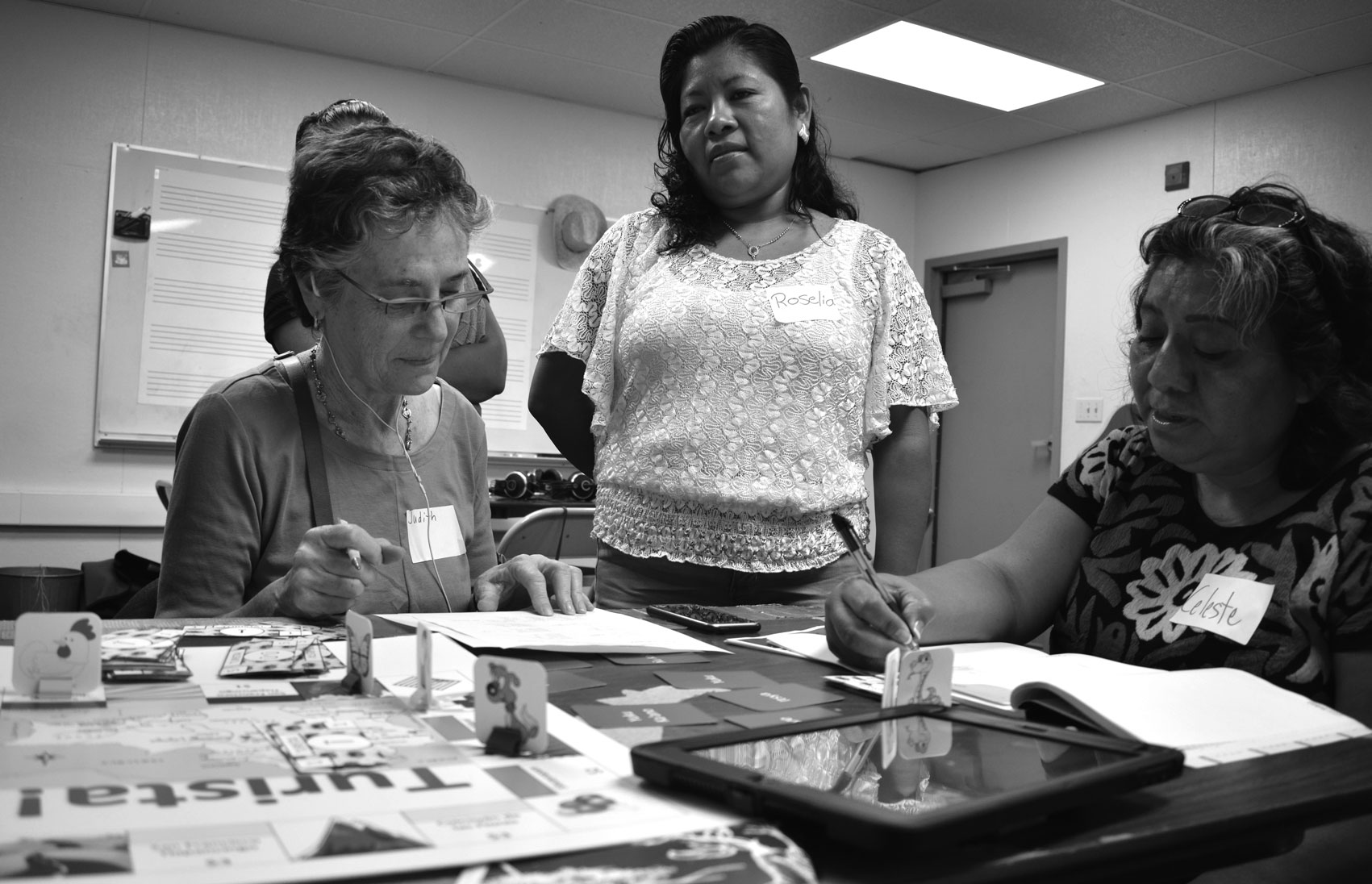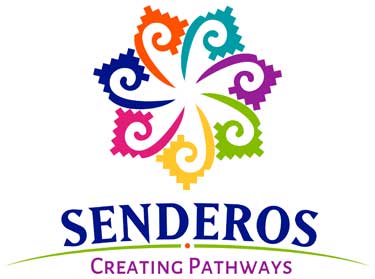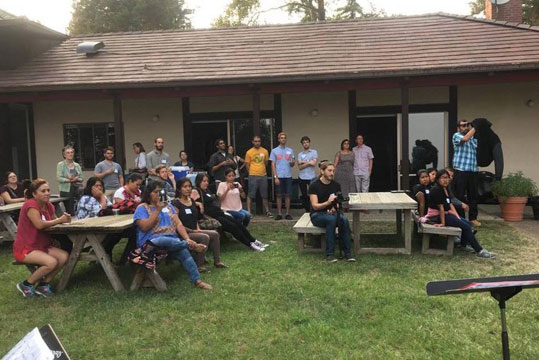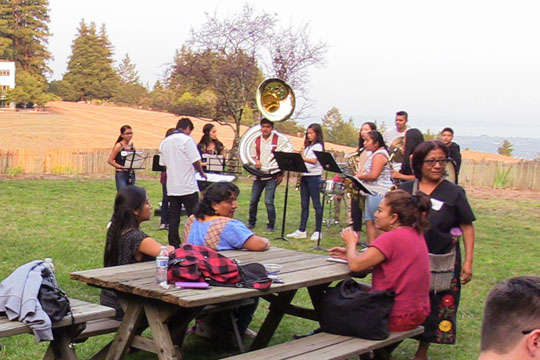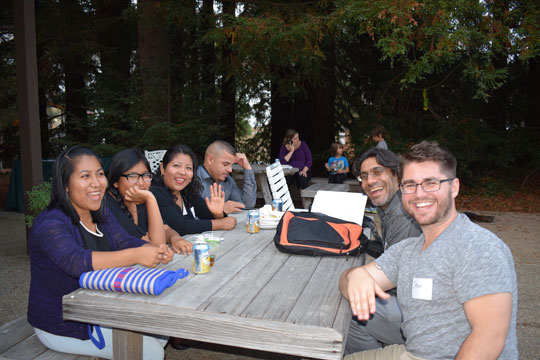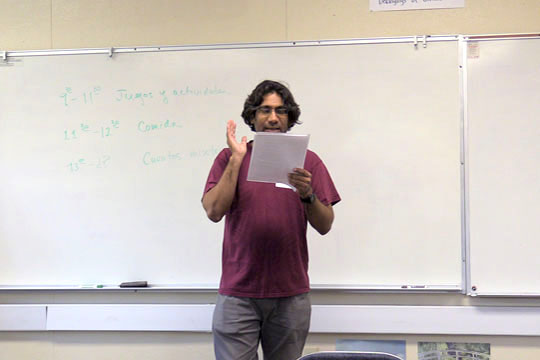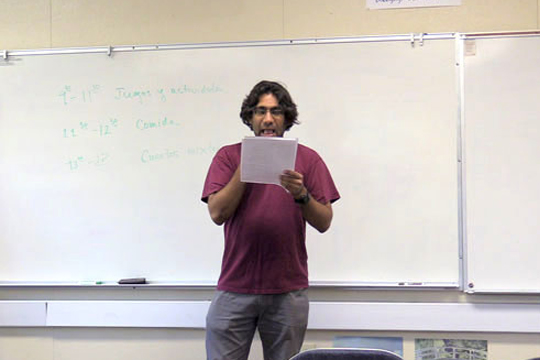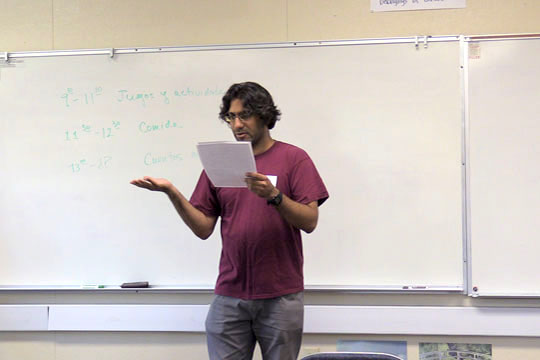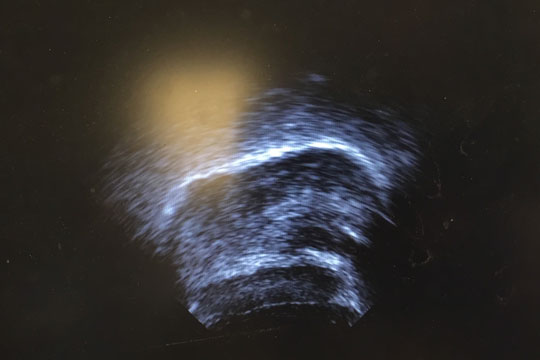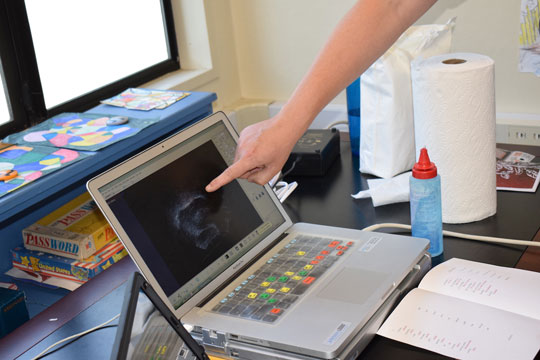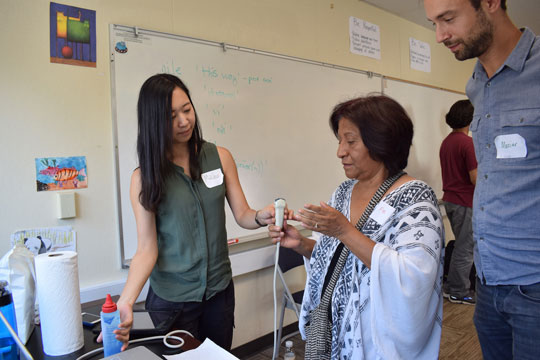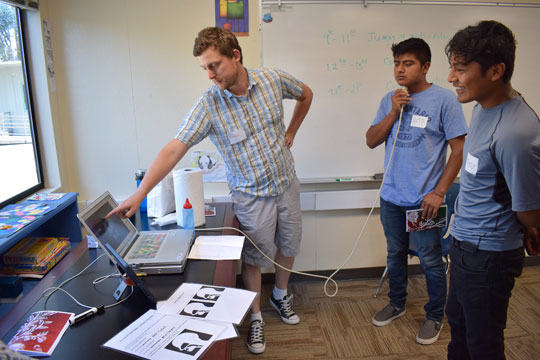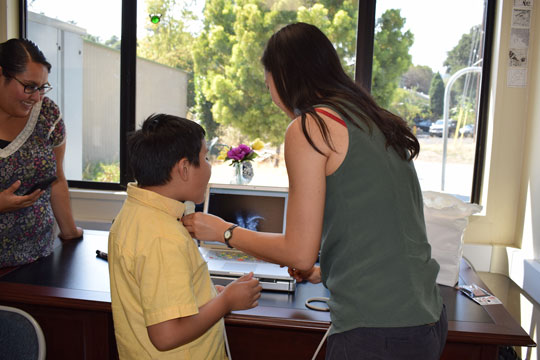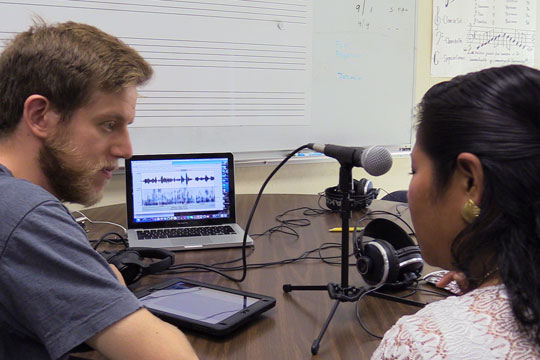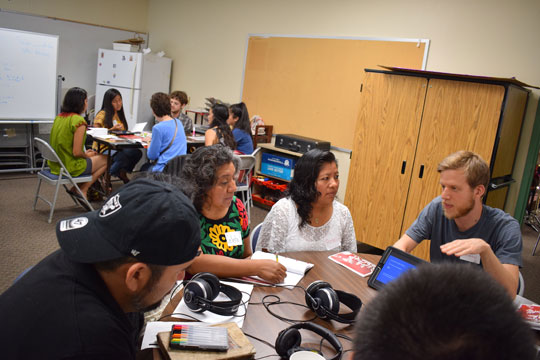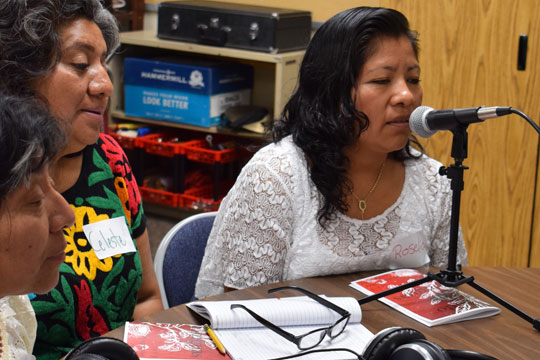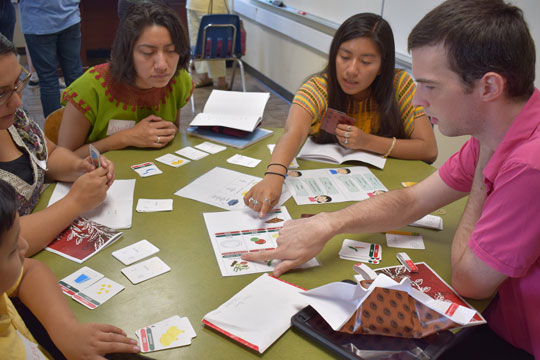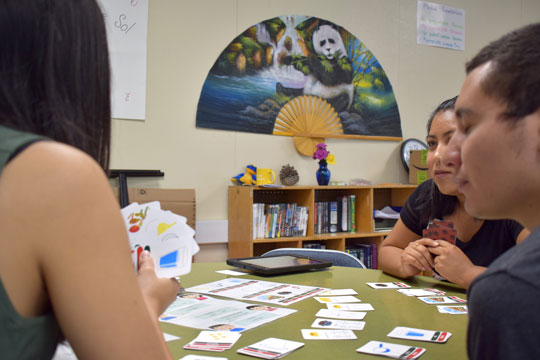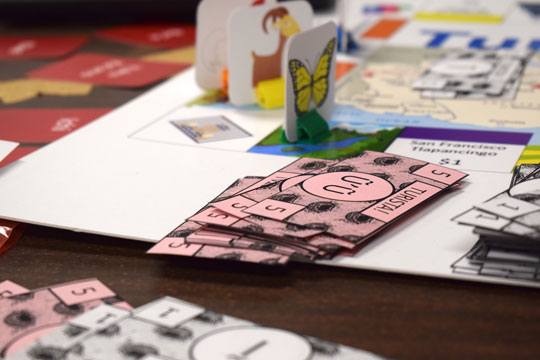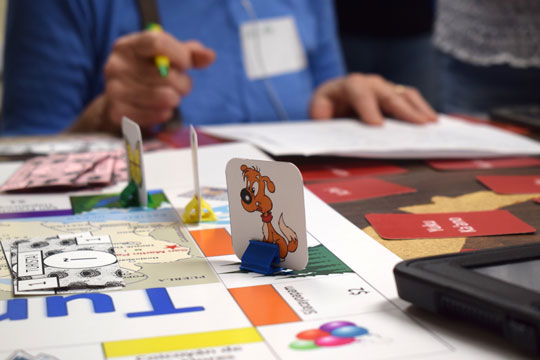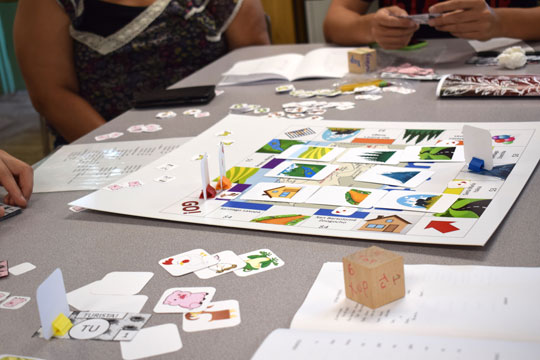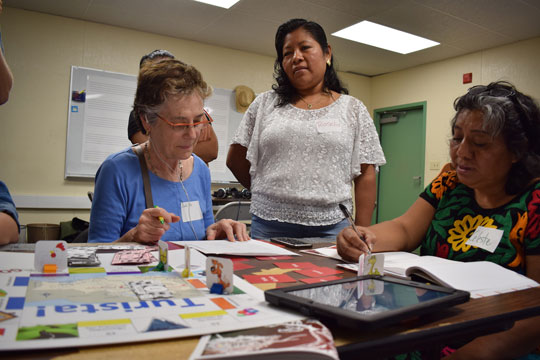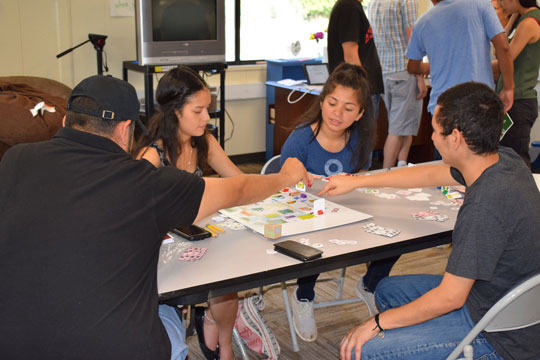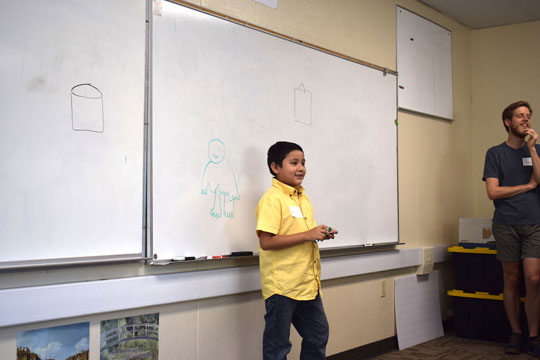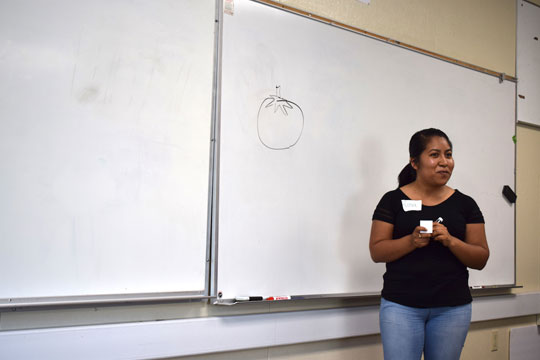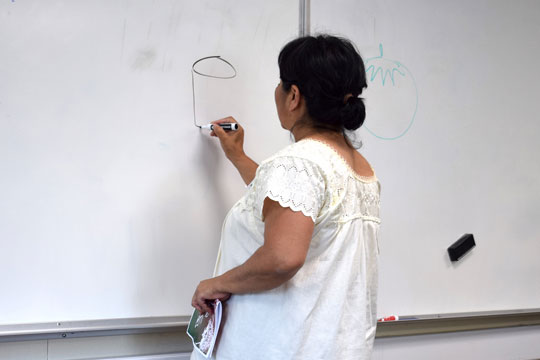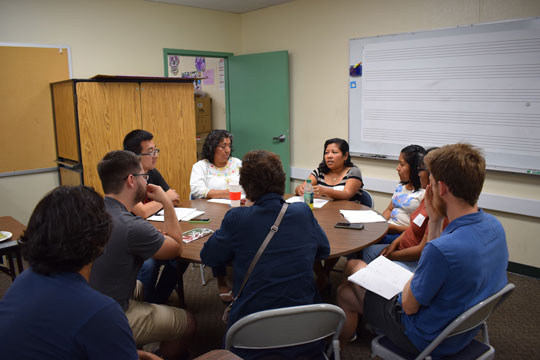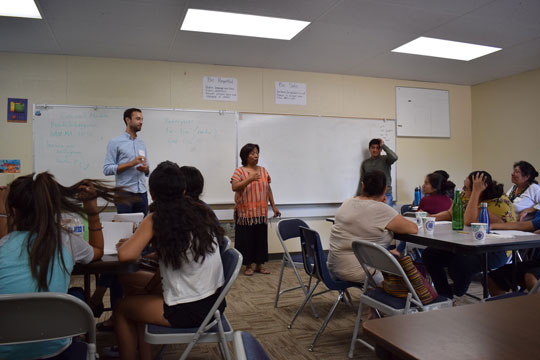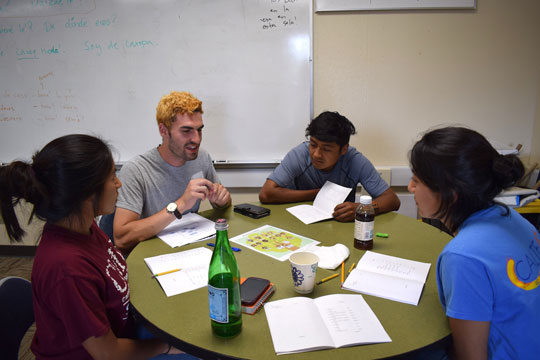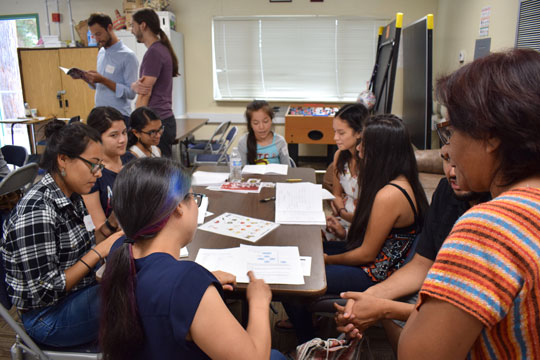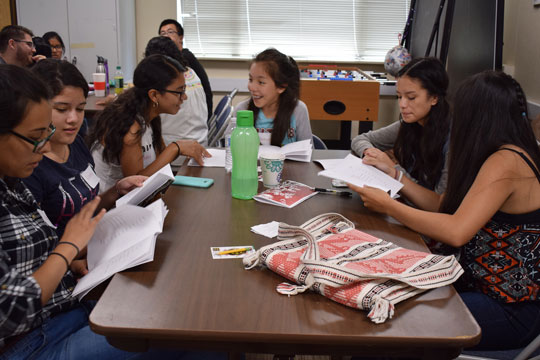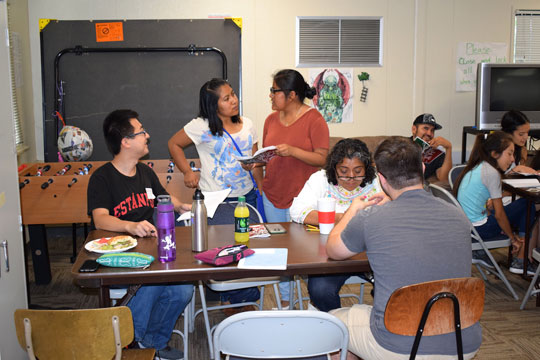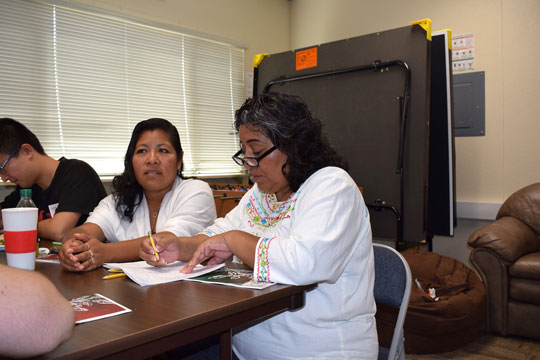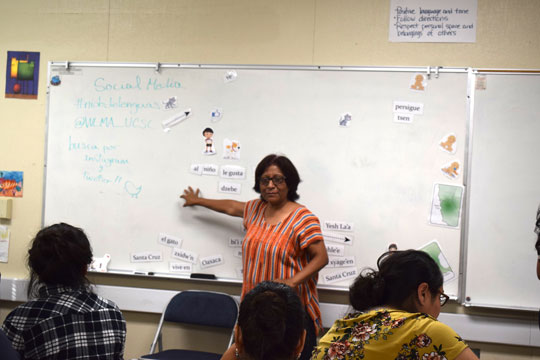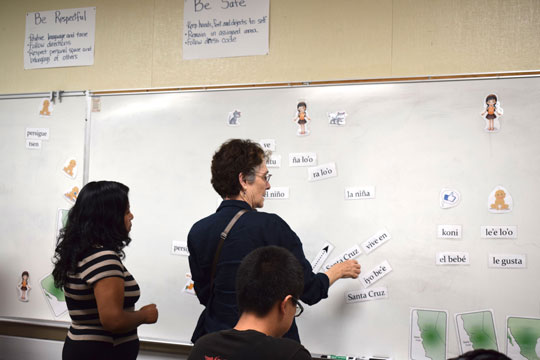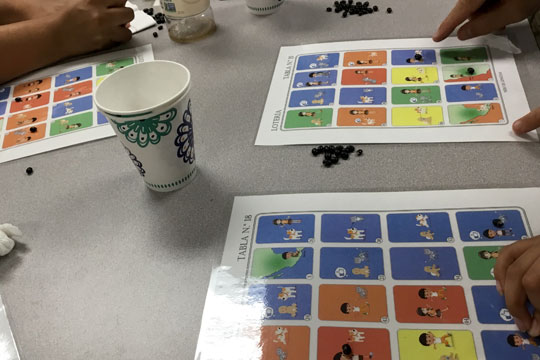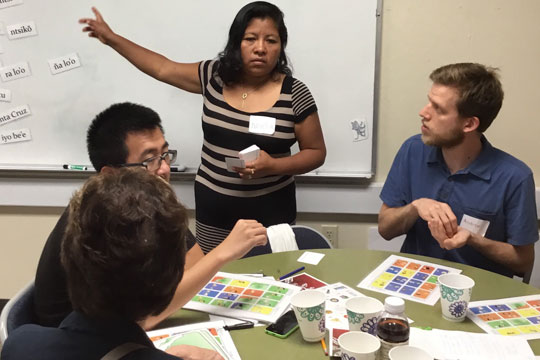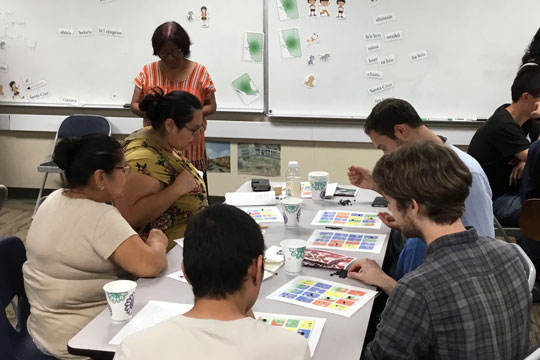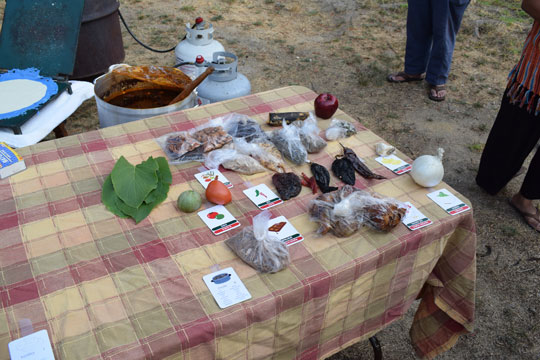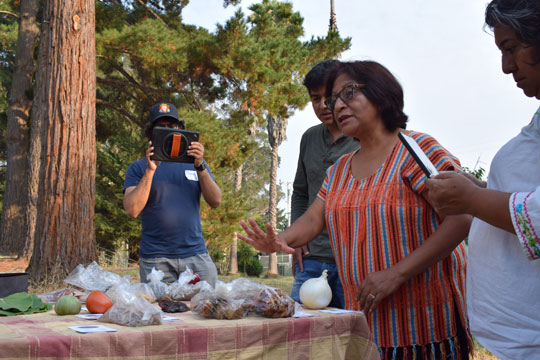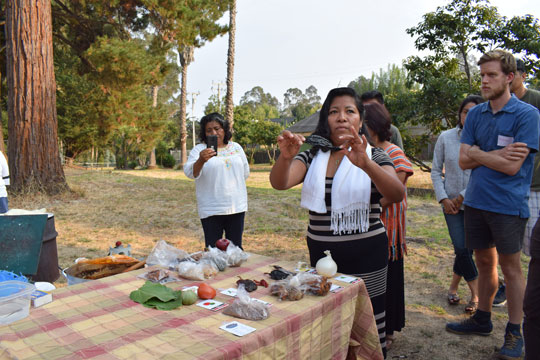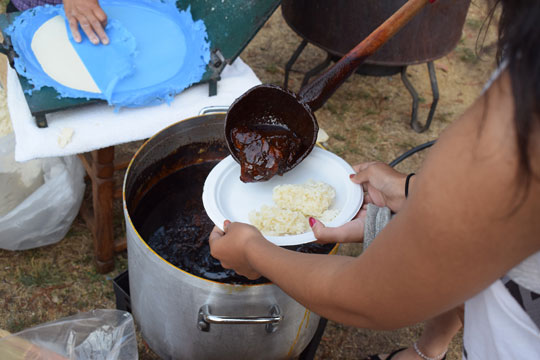This year's events
Saturday, November 16, 2019
Time: 1 pm to 3:30 pm
Place: Watsonville Public Library (275 Main St., Watsonville)
March 2020
Canceled
June 2020
Canceled
Nido de Lenguas: Camp is free and open to the public. Registration is required. Please sign up online using the form or by emailing us at nidodelenguas@ucsc.edu.
What is Camp?
It is a one-day event where anybody has the opportunity to learn about — and learn how to speak — a Oaxacan language. For the fall Camp, participants will learn the Mixtec of San Martín Peras.
Camp brings together community members with native speaker and linguists from UC Santa Cruz. There are fun group activities and fast-paced games, each geared toward learning a Oaxacan language.
Who comes to Camp?
Participants are community members who were excited to discover the indigenous languages of Oaxaca, many spoken by their neighbors across the Monterey Bay area. Native speakers of Mixtec and Zapotec teach their languages, and linguistics professors and students from UC Santa Cruz facilitate the activities.
Camp 2017
Day 1: Getting started
-
Introductions
Nido de Lenguas: Camp kicked off with community members, native speakers, and linguists all gathering for a dinner at the Cowell College Provost's house on the UC Santa Cruz campus.
First came introductions. Maziar Toosarvandani, a linguistics professor, talked about how linguists at UC Santa Cruz are working with native speakers of indigenous languages. He then introduced Fe Silva Robles, the Director and Co-Founder of Senderos, who described the organization's mission and the goals of Nido de Lenguas.
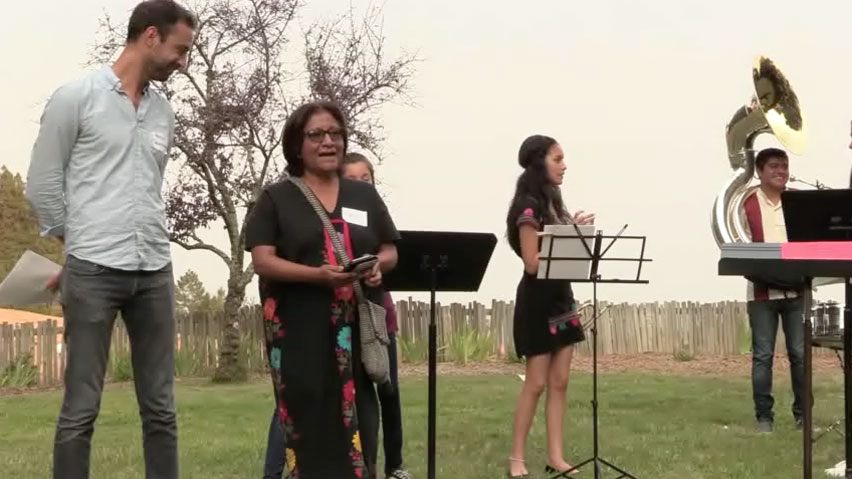
-
Food and music
Enjoying food and music with others knows no boundaries. Participants partook of a delicious Mediterranean meal, while the Senderos banda performed.
The banda members included Angelica, Andy, Ashley, Daisy, David, Fernanda, Ibeth, and Jazmin. They were led by Maestros Beto and Froylan, with Maho Morimoto, a linguistics graduate student, joining them on French horn.
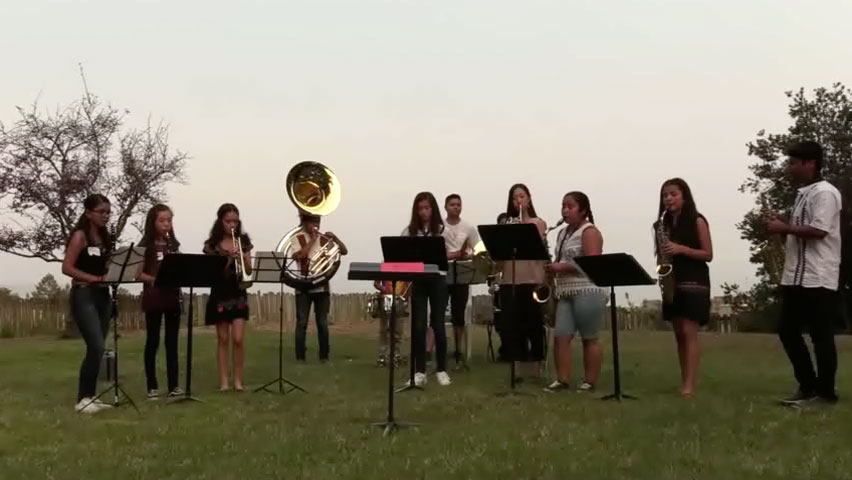
Day 2: Learning sounds and words
-
Welcome back
Opening the second day, Pranav Anand, a linguistics professor, welcomed the participants back with a poetic ode to the importance of language, as well as some more mundane information — the day's schedule of activities.
-
Using ultrasound to learn retroflexed sounds in Zapotec
Linguists recently started using ultrasound to see how and where the tongue moves during speech. Maestra Fe and Maestro Beto, who are native speakers of Santiago Laxopa Zapotec, demonstrated how retroflexed sounds — made by curling the tip of the tongue backwards — are pronounced in their language, with the help of Maho and Ryan Bennett, both linguists interested in speech production.
Participants then practiced making these retroflexed sounds, using the ultrasound image of their tongue to guide them.
-
Seeing and pronouncing tones in Mixtec
Linguists use special audio software to analyze the physical properties of the speech signal. Maestra Roselia, a native speaker of San Martín Peras Mixtec, showed how to pronounce the five tones in her language, using this software to visualize the pitch of each tone — how high or low it is — with the help of linguistics graduate student Andrew Hedding.
Participants also took their turn with the software as well, practicing the tones and "seeing" how they were doing.
-
Games as practice
After learning the sounds of these two indigenous Oaxacan languages — San Martín Peras Mixtec and Santiago Laxopa Zapotec — participants learned some useful words in both, practicing them by playing various games with the help of several linguists.
In Mercado, a version of Go Fish, participants practiced the words for traditional foods, including tortilla, quesadilla, tamales, and mole, as well as their ingredients.
In Turista, a play on Monopoly, participants practiced the words for numbers and common locations (home, river, road, etc.) They also got acquainted with the names for several towns in Oaxaca.
Last, participants flaunted their artistic — and new linguistic skills — in a game of Pictionary, guessing the drawings using words of Mixtec or Zapotec.
-
A traditional story in Mixtec
In the afternoon, after the games were finished, Maestra Roselia shared a traditional story about a farmer and his animals in Mixtec, so that participants could hear how the language sounds when people are speaking naturally.
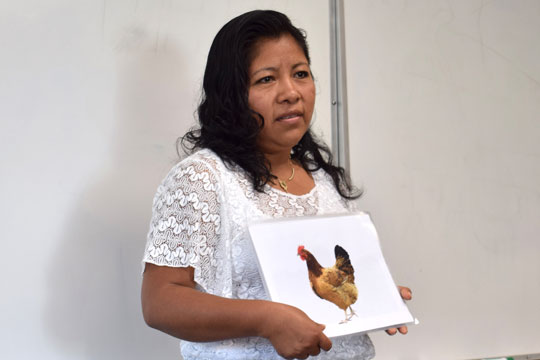
Maestra Roselia illustrating the story with a picture of a ndzushi
-
A conversation in Zapotec
Also, Maestra Fe and Maestro Beto conversed in Zapotec about what they did this summer. Participants were then supposed to guess what they were talking about. Some did!
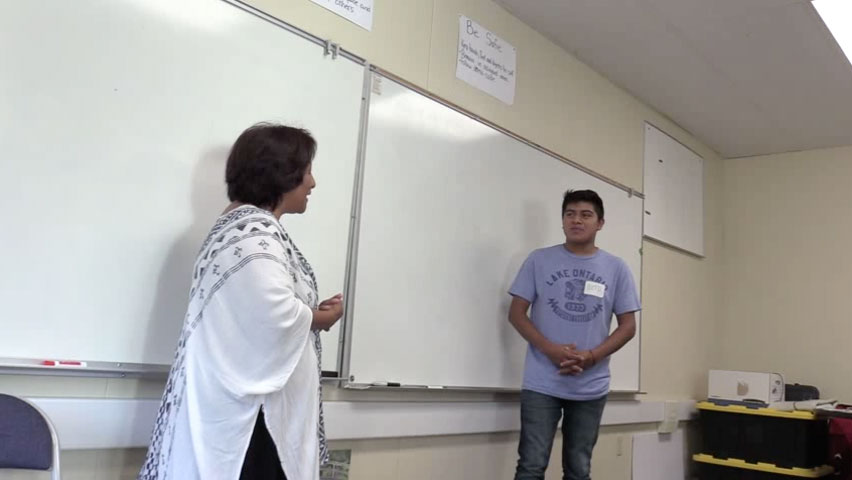
Day 3: Building phrases and sentences
-
Conversational basics
Building on what they had learned, participants started putting together words into phrases and sentences in Mixtec and Zapotec, guided by linguists. They learned how to greet people, talk about who they are, and ask others about themselves.
They also learned the words for their family members, how to introduce them to others, and how to talk about their occupations.
At the end, participants put everything they learned together to record a short biography about themselves in either Mixtec (the first video) or Zapotec (the second video).
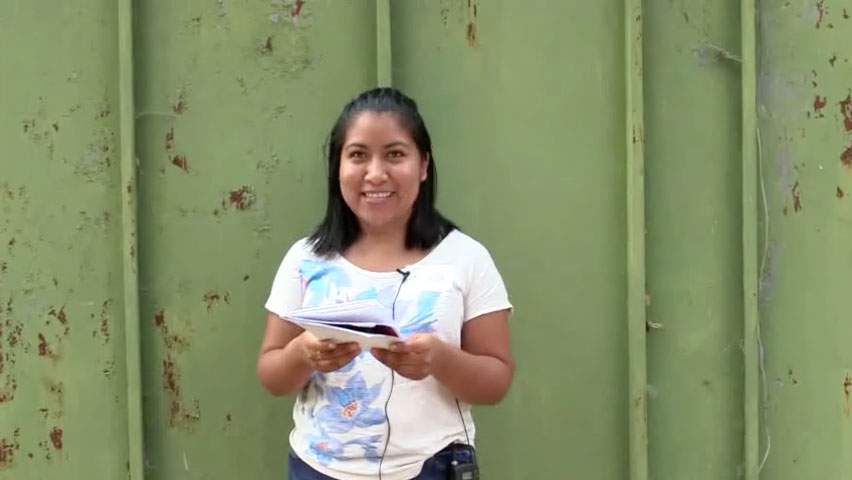
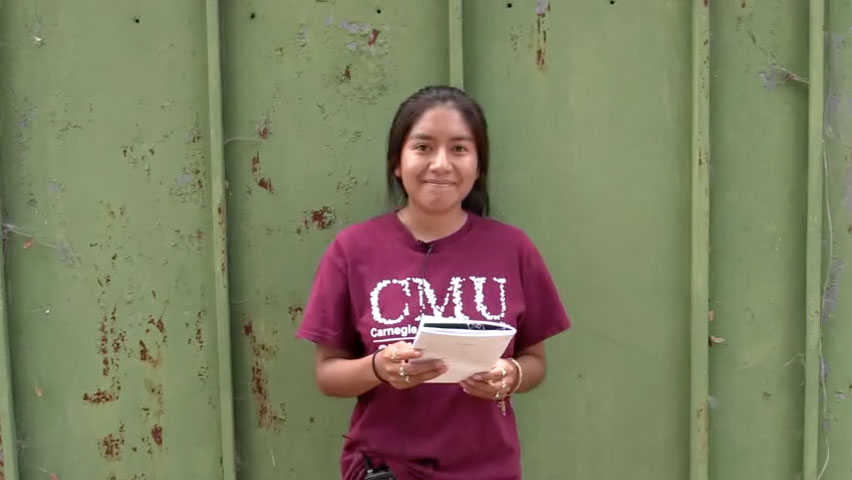
-
Forming more complex sentences
Languages can order the words in a sentence in different ways. In English or Spanish, the subject precedes the verb, which precedes an object. Maestras Fe and Roselia taught participants that, in Mixtec and Zapotec, the basic order of words is different: first the verb, then the subject, and then the object.
After practicing how to make sentences in Zapotec and Mixtec, participants worked on their listening skills by playing Lotería (or Bingo). Maestras Fe and Roselia said sentences in Zapotec and Mixtec, and players matched what they heard to the pictures on their card.
-
Mole and tortilla!
As a final lesson, the two maestras taught everyone the names of the ingredients for a traditional Oaxacan mole in both Mixtec and Zapotec.
To celebrate their hard work, the native speakers and participants enjoyed a final dinner together of mole and freshly made tortillas, courtesy of Lorenza.
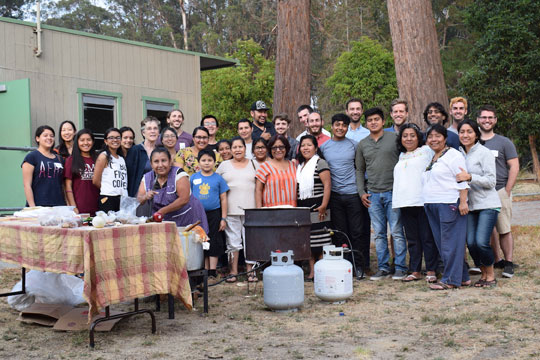
Nido de Lenguas: Camp participants
